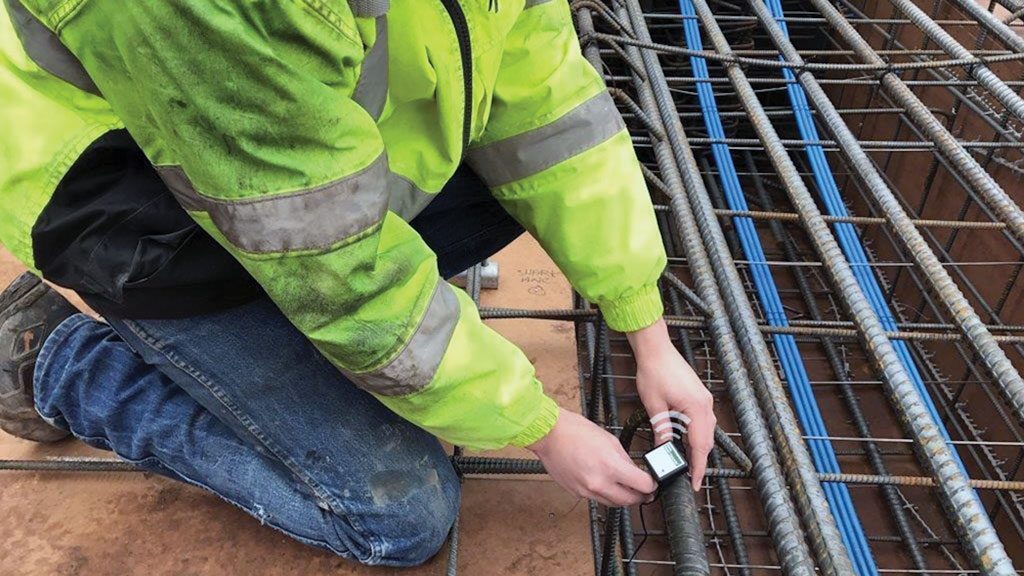It’s been nine years since Pouria Ghods and Aali Alizadeh, two young and eager civil engineering PhDs from Ottawa, embarked on a quest to do something that would change the construction industry.
Their vision? Use their engineering skills to produce science-based technology, products and applications that would improve practices and make life easier for those working on construction sites around the world.
Together, the entrepreneurs formed Giatec Scientific, which now has a portfolio of portable smart-testing technologies that measure and monitor such things as corrosion of concrete structures.
The flagship of their enterprise is an embedded sensor technology called SmartRock that allows contractors to monitor concrete as it cures and hardens in real time.
The technology was released in late 2015 and, since then, has been used by companies on approximately 3,800 projects worldwide in 45 countries.
It’s an important technology because concrete has to be relatively warm for it to set and cure properly. In unpredictable climates and cold weather conditions such as those that exist in Canada, outside heating sources are often required to project warm air near the concrete material.
The sensor is a square, palm-sized wireless device that is attached to rebar a few inches from the surface with the twist of two wires. This ensures the signal strength is powerful enough to be detected by a smartphone or tablet. Project managers can attach the sensors before the mix is poured.
Concrete can then be poured normally and the end-user can easily begin real-time monitoring of concrete temperature, maturity and strength of the mix via a desktop or laptop computer or smartphone.
The temperature history can be used to calculate the maturity index of the concrete, enabling the user to predict its early-age compressive strength.
Alizadeh says many customers use the sensors because they want to ensure proper curing of the concrete during the first few days or weeks so it develops strength, which is particularly important in critical construction operations such as formwork removal, post-tensioning and concrete pavements.
The sensors can help contractors decide when it is safe to remove covering from a concrete surface and also when it is safe to open formwork or shoring in a construction project. Data from the sensor is also transferred to Giatec’s cloud server and can be shared with other team members.
“These are fully embedded wireless sensors that are cast in the concrete,” explains Alizadeh. “They are installed and the concrete is poured. The sensor is fully embedded in the concrete with no wires coming out like the traditional types of sensors and the sensor is actually secured in the concrete.
“The end users can use their mobile app — either Android or an iPhone — to connect to the sensors wirelessly and download the data related to the concrete temperature and strengths in real-time and make decisions on the spot.”
The sensor uses Bluetooth technology that has been customized for use in the sensor and can transmit signals to an app on smartphones or tablet up to eight metres away.
It’s so easy to use for them and be able to have access to real-time data,
— Aali Alizadeh
Giatec Scientific
On a smartphone, the mobile app displays the history of temperature variations in the concrete which can be used to study the hardening process. The battery on the sensor can last up to four months. Data is stored in the memory of the sensor.
A reader collects the data from the sensor at certain time intervals of 30 minutes or less. A traditional reader requires a wired connection to the sensor to retrieve the data.
A hub can also be left at a jobsite which automatically scans the sensors embedded in the concrete and syncs the data to the cloud so, even if a superintendent is not on a jobsite, he or she can get the data on a smartphone or at the office.
Alizadeh says the sensor technology has been a big hit as the younger generation of workers joining the construction industry are demanding technology and want mobile and wireless solutions.
“When a contractor starts using these sensors they can’t go back,” he says. “It’s so easy to use for them and be able to have access to real-time data.”
The technology is now on the international market, and the sensors are being used by PCL and Lafarge. Giatec is also partnering with ready-mix producers who can use the real-time data to entice contractors to buy certain concrete mixes or mix designs.
“We’ve been really impressed by the adoption and rate of the adoption by the industry in general,” says Alizadeh. “We’ve seen over the past few years significant growth in our market.”
The company plans to add sensors to its portfolio so concrete can be monitored from production to when it’s being delivered, while it’s being poured, and while it’s in service.
“It was part of our global vision to make jobsites and construction smarter and more connected as well as bringing IOT (Internet of Things) applications to the construction sector and making everything connected and monitoring concrete all the way from the beginning of its production to site.”
Alizadeh says he and his partner are fortunate to have developed such a product when artificial intelligence is booming and plan to bring more solutions that offer value to the construction industry.
The massive amounts of data collected from the sensors is also being collected and sent to the cloud so machine-learning can provide new insight on concrete behaviour and performance, which will help Giatec develop even more solutions of value to end-users.
“All of the contractors, by being part of this eco-system, are getting the benefit of the collective data. It’s moving more and more towards leveraging this data to bring even more value to all the stakeholders.
“It’s an interesting time.”











This is how you measure concrete strength in the 21st-century. We need to think out of an old box and use a new one.